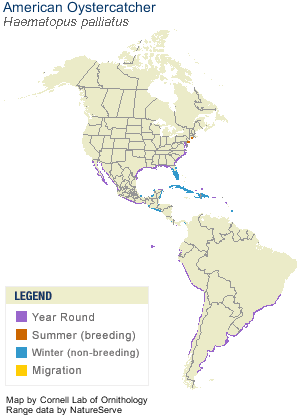The August newsletter from GCBO is just about as good as it gets - a note about the upcoming Xtreme Hummingbird Xtravaganza:
Autumn is hummingbird season in Texas, as thousands of these tiny creatures move through the state on their southward migration to Mexico and Central America. Many Ruby-throats will travel 600 miles straight across the Gulf to the Yucatan Peninsula while others will fly around the edges of the Gulf to points in Mexico. Be sure to mark your calendars for September 8th and 15th when we will host our annual Xtreme Hummingbird Xtravaganza. You can watch hummingbird banding, adopt a hummingbird, browse the Nature Store, walk the nature trails, or buy a plant to attract hummingbirds and butterflies.Then, after an update on a land purchase grant in Costa Rica, an update on the American Oystercatcher project that we blogged earlier:
Our second field season studying American Oystercatchers was a lesson in contradictions. We again found our first nest in February and the last one in June, but that's where the similarities ended. There were fewer pairs overall so we expanded our monitoring area. We found 48 breeding pairs which produced 81 nests in Galveston and East Matagorda Bays. Bad weather hampered our monitoring attempts as well as oystercatcher productivity. Whereas last year we had no pairs attempt to nest more than twice, this year we had many pairs that attempted to nest three times only to be met with high tides that washed eggs and/or chicks away or caused starvation when the adults were unable to feed the chicks. On the Upper Texas Coast, we color-banded 54 adults and only 14 chicks. Overall productivity was approximately .21 which when compared with last year's .78 is quite a contrast. This field season marks the end of Texas State graduate student Alexandra Munters (pictured above) research on this project. She expects to graduate with a masters degree next spring and we are anxiously awaiting the results of her analysis.
This year Lianne Koczur, a graduate student from TAMUK, monitored oystercatchers on the central coast. She monitored 67 nests from 49 breeding pairs located from Matagorda Bay south to Corpus Christi Bay. Productivity on the central coast was slightly higher at .31. We have now banded 125 adult oystercatchers and 59 chicks and are looking forward to resighting data from you. If you are out birding and you see a banded oystercatcher, please check the legs for bands and let us know if you see any banded ones. We would like to thank the many volunteers that helped with this research project!


